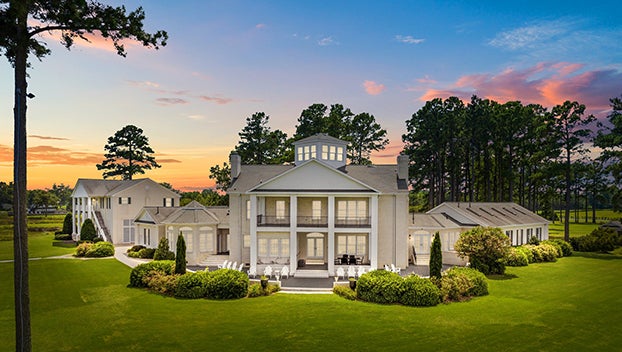Morris Insurance recognized for historic continuity
Published 4:55 pm Thursday, June 9, 2016

- AWARD WINNING: Morris Insurance owners Dick Barber and Joe Taylor are the latest recipients of the Terrell Award, given by the City of Washington. Pictured left to right are Barber, Taylor, realtor Scott Campbell and City of Washington community development planner Emily Rebert.
Dick Barber and Joe Taylor are the newest recipients of the Rena K. Terrell Award.
The owners of Morris Insurance were presented the award this week, a nod to the extra effort they took in building an addition to their historic North Market Street office building.
“It really exceeded our expectations, and we’ve gotten many, many compliments and ‘thank yous’ from our customers,” Barber said.
On Monday, City of Washington community development planner Emily Rebert and Century 21 realtor Scott Campbell presented the Terrell Award, named for Rena K. Terrell, a prominent Washington historic preservationist. The awards, given by the City of Washington, recognize historic preservation in four categories: stewardship, residential, the “good neighbor” and commercial. Previous awards went to: Dr. Frank and Alice Stallings, who were recognized with the stewardship award for the preservation of their home for 50 years, the circa-1820 Elmwood; siblings Buck and Diane Lewis, who were acknowledged in the residential category for the restoration of their East Second Street Home; and the Washington Waterfront Underground Railroad Museum founders Leesa and Milton Jones and Rebecca Clark, who were given the “good neighbor” award for their preservation and restoration of the Atlantic Coastline caboose as a museum and overall draw to downtown Washington.

RECEPTION: The addition holds a reception area, office, restroom and conference room, all handicapped accessible.
Morris Insurance falls in the commercial category, and it was a business decision that prompted Barber and Taylor to expand the offices of Morris Insurance in a way that maintains the building’s history.
The building started its life in 1810 as the family home of Thomas Harvey Blount. Later, it would serve as a hospital during the Civil War. For 50 years, it was the meeting place of the Christian Science Society — it was then that an aesthetic transition began to occur, over decades, transforming a house to a place of business. Its exterior has the austerity of the former church; its interior, however, has maintained the feel of the home it once was. Choosing to preserve the building’s character was deliberate on the part of Morris Insurance partner Dick Barber, who said he wanted a place where clients would feel comfortable.
Concern for their clients was the primary purpose behind the addition to the building, as the many steps to the front door of the building posed a problem for some.
“We never had a lot of complaints from customers, but if you came up the front steps there are plenty of them,” Taylor said. “We wanted to get something with less steps to get in. That was the main thing.”
Washington resident Dal Newbold drew up the design, and Barber and Taylor took it to the Historic Preservation Commission for approval. When construction started in October 2015, they removed a window on the rear exterior wall, enlarged the opening and added a short flight of stairs now leading into a reception area, along with an office, a restroom and a conference, all handicapped accessible.

THE ORIGINAL: A photo of the original structure, a home built in 1810 by Thomas Harvey Blount, hangs in the reception area of Morris Insurance.
What makes the addition stand out, however, is that is doesn’t stand out. The addition is nearly indistinguishable from the old.
From the first, Barber and Taylor knew they wanted it to blend with the rest of building, just as the partners of Rodman, Holscher, Peck and Edwards, had done with their own renovations across the street. Another historic-home-turned-office, the attorneys had tacked on an easily accessible entrance to the rear of the building.
“We kind of played off what they did. It feels natural,” Taylor said. “It’s not big, but it’s really functional. … Getting things more accessible — that was the whole thing for us.”
Taking care of Morris Insurance customers and employees meant choosing to preserve the historic nature of the building, and it’s that the city is rewarding.
“This is a great idea for these houses around here, and it’s fairly economic when you compare it to building new,” Taylor said.





